Event Details
Object: (90) Antiope
Event Date: 2015 April 2 UT (Wednesday evening April 1)
Observation Window: 04:55-04:58 UT (21:55 – 21:58 PDT/MST)
Sense-Up: 8x
RA: 12:01:57.0 (equinox of date)
DEC: +02:53:21
RA: 12:01:10.1 (J2000)
DEC: +02:58:27
Constellation: Virgo
Star Magnitude: 10.7
Magnitude Drop: 2.7
Star Altitude: 38-49 degrees SE
Moon Phase: 95% (!!!!)
Moon Distance: 13 degrees
Due to the proximity of the nearly full moon, the sky background may be a problem for the camera at the recommended senseup setting of 8X. If it is too bright, then reduce the senseup setting until things look more or less normal. You can go all the way to 2x and take useable data if you need to.
Notes
(90) Antiope is a binary asteroid that has been mapped in detail during previous occultation campaigns. See below for a profile of this object obtained during an occultation campaign on 2011 July 19. The image shows the two components of the double asteroid.
Our occultation campaign in April 2015 will contribute useful profile information from a different geometric orientation. The predicted shadow path for this event crosses the pilot RECON Network with the 3-sigma region spanning Tulelake down to Kingman.
In addition to contributing data regarding the shape of Antiope, this campaign will serve as an excellent practice campaign for the southern extension of the RECON network which will be trained in the Southern RECON Training Workshop in Kingman Arizona March 19-22. All RECON Teams from Tulelake south to Yuma are expected to participate in the campaign and should sign up for the event on Occult Watcher.
Either before or after the event, you should make a short recording of your position information using the switch on the front of the IOTA-VTI box. Adjust the switch to POSITION, record the screen showing your latitude/longitude for 3-5 seconds, and then adjust the switch back to TIME.
Thank you for keeping track of your observations using the RECON Observation Logsheet.
Star Training Set
Object RA Dec mag sep mel Spica 13:25:59.9 -11:14:26 1.0 25.23 37 Denebola 11:49:50.2 +14:29:12 2.1 11.98 15 7 Vir 12:00:43.8 +03:34:13 5.4 0.75 13 PPM 158422 12:01:56.9 +03:32:50 7.9 0.66 13 PPM 158397 12:00:14.8 +02:48:14 9.8 0.43 13 PPM 158423 12:01:57.0 +02:53:21 11.2 0.00 13 Antiope 12:01:57.0 +02:53:21 10.7 13 Positions are for equinox of date
Note that the last star in the list is the star to be occulted. I left it in as a reminder that the star magnitudes we use aren’t always consistent between different catalogs as is in this case. Watch out for the very first star on the list. If you are getting on the field really early you might not be able to start here. The star, 7 Vir, works very well as a first test star. Working through this training set will be very important for this event due to the nearby nearly full moon. You may not see anything other than the target star when you get to the field.
Finder Charts
The following chart was generated using the AAVSO Variable Star Plotter. Note that we have changed the orientation of the map so that it will match what you will see using the MallinCAM connected to the telescope with a diagonal. For the remainder of the project, we intend to provide star charts using this orientation.
Note also that this is a sparse star field with few stars in the immediate proximity of the target star. This, in addition to the fact that the nearly full moon will be only 13 degrees away, will make positively identifying the star field challenging. We recommend using the starhop technique and also note that there is a recognizable double star to the southwest of the target star.
Images of Star Field
The following star field image was provided by Bill Gimple from Greenville, California. Additional images are welcome!
Here’s another version without any rotation but with hot pixels removed.
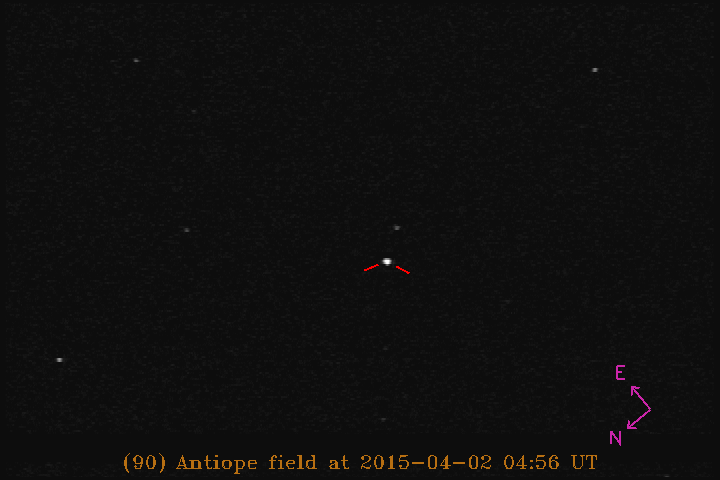
This was taken by Marc Buie about 9pm MST on 2015 March 16. This is the native orientation of the image. It has been processed to remove hot pixels. The image was taken with a SENSEUP ov 128x to bring out the field stars for field confirmation.
With a little more processing, here is the same image rotated and stretched to bring out the faintest stars.
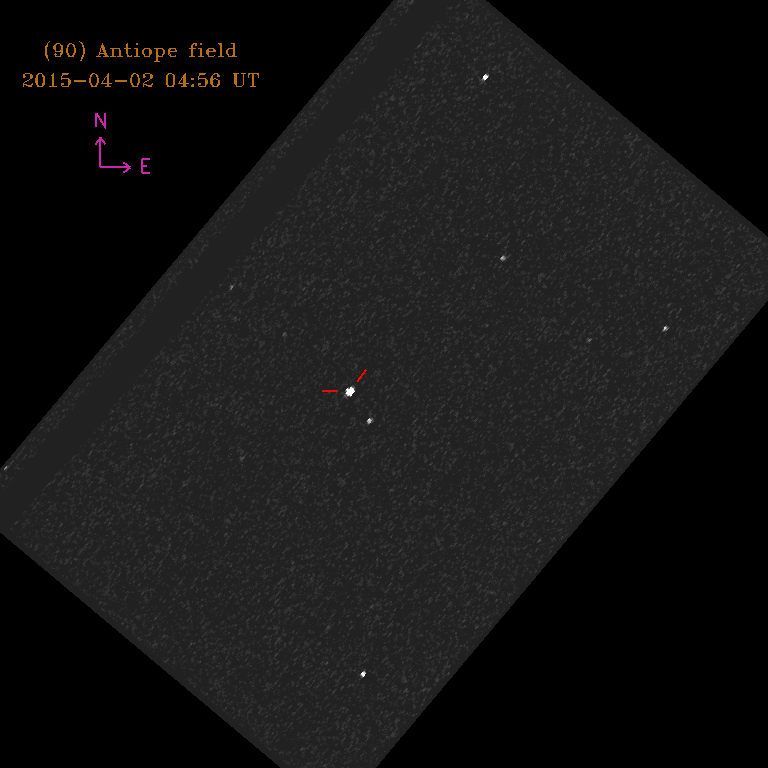
This is an image of the field where (90) Anitope will be on 2015 April 2 UT. It has been rotated to put north up. The field parity is still flipped, due to use of the diagonal. The image has also been stretched to make the sky more apparent and bring out the faintest stars.
Uploading data
To upload your video files and observation logsheet, go to http://spikard.boulder.swri.edu/upload.html.
Event Log
Following the event, please let us know how it went using the form below. To view survey responses, view the Results Page here.

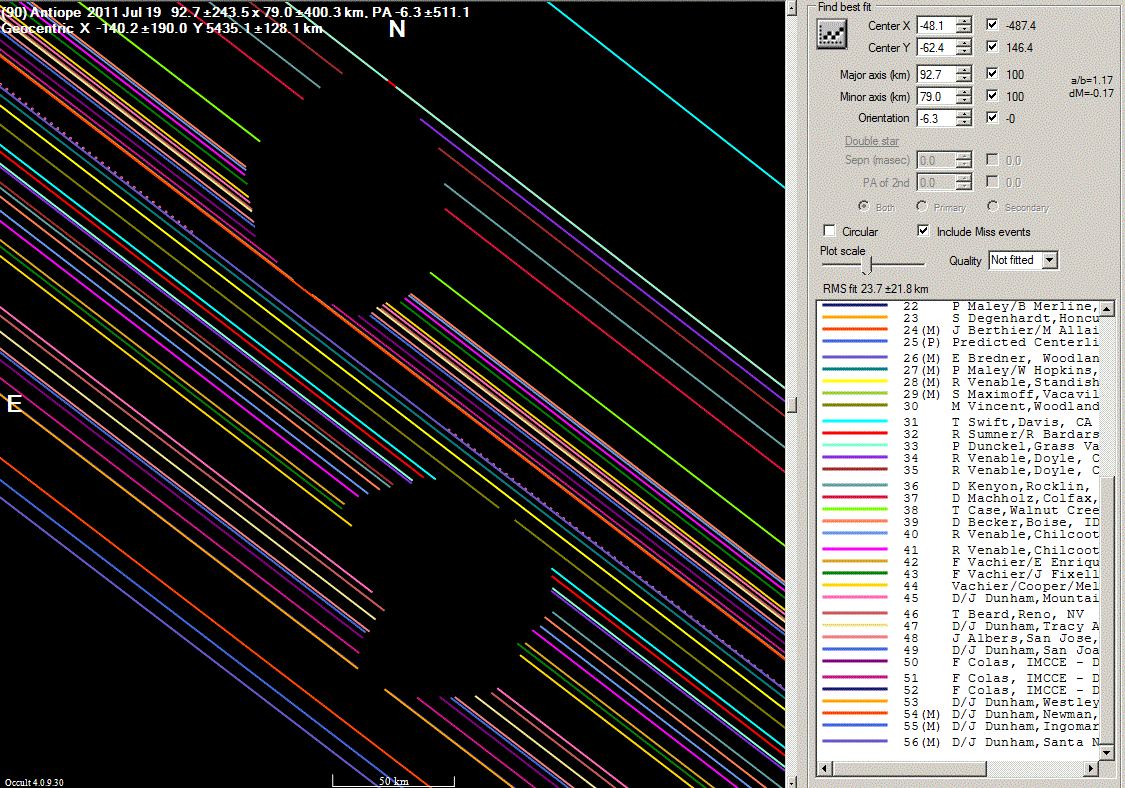
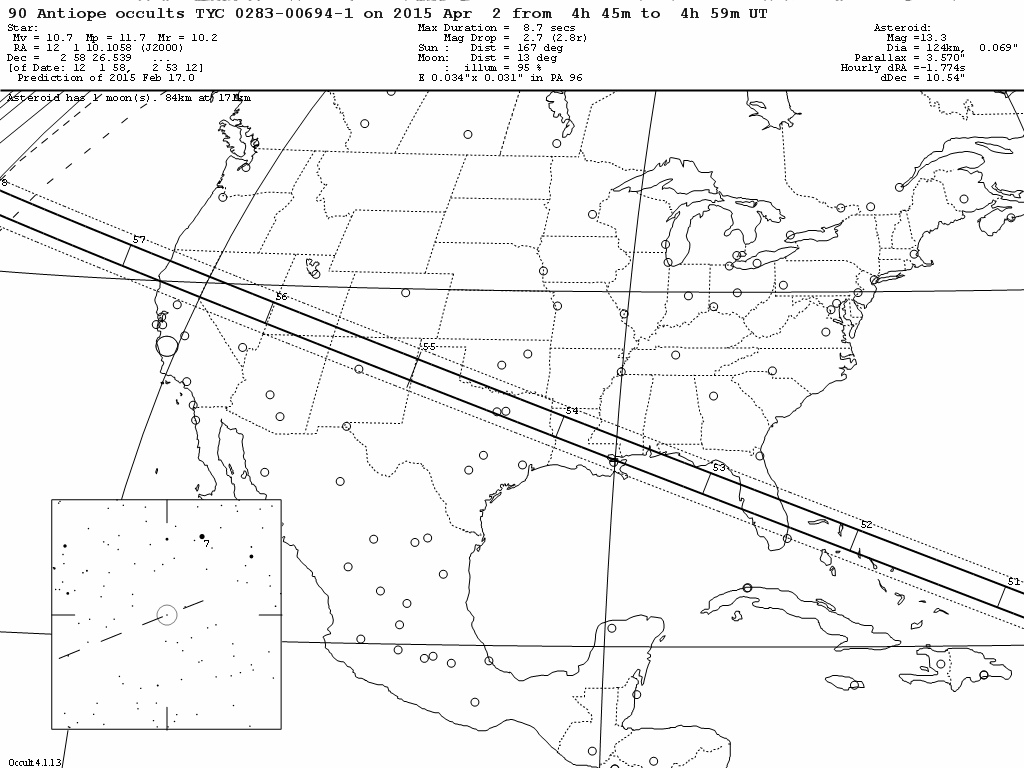
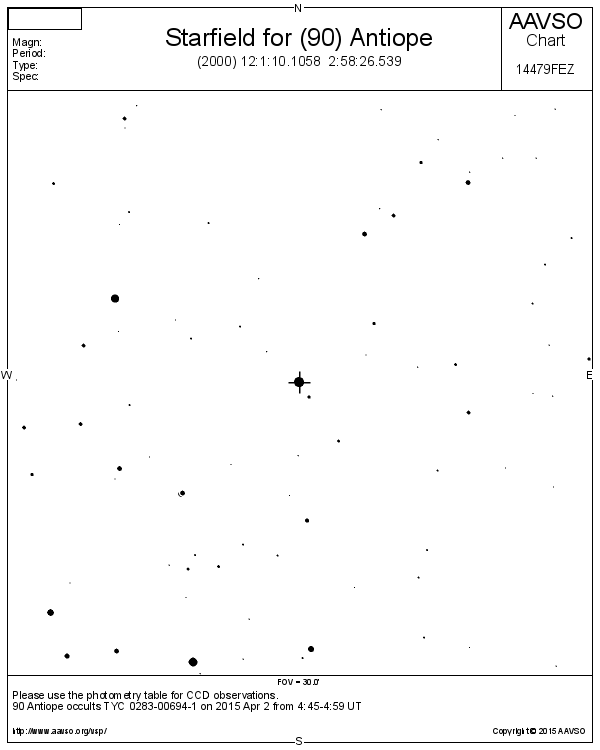
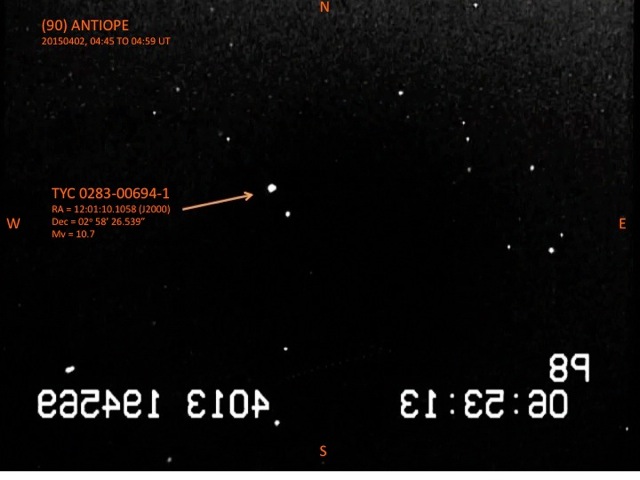
We were on the star last night and recorded. I don’t think we saw it down here in Beatty but the kids got to see the setup and learned about how our telescope tracks. Our school wireless is down right now but I will send the data tonight from my home computer
Did not get to record event last night. Technical difficulties. We are working on a technical problem solving guide to assist whomever is in the field. Keeping a log book of problems as the arise and what we found useful with our telescope. Had some students come out and that was nice to see them excited!